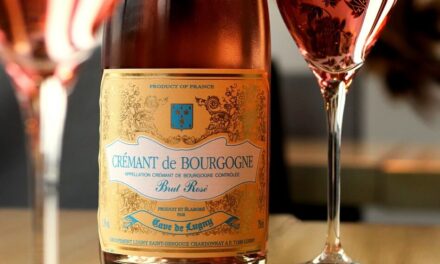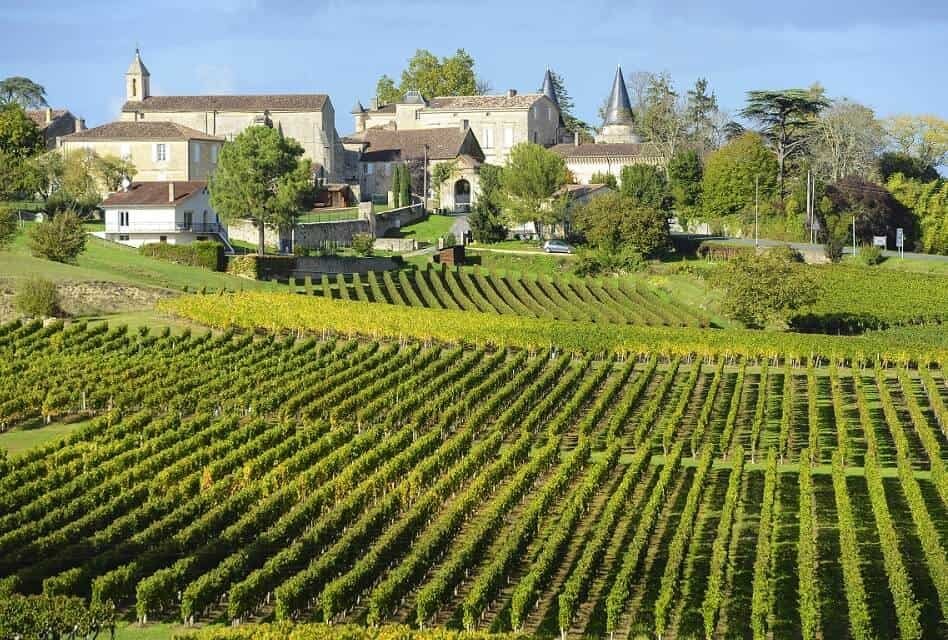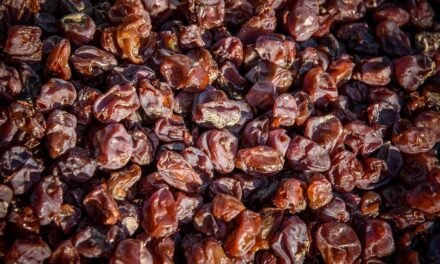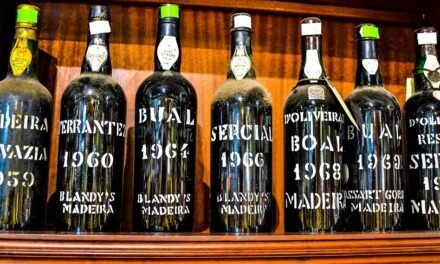Syrah and Shiraz regularly create confusion among wine lovers. Many do not know if the two differ and, if so, how. So what exactly is the difference between Syrah and Shiraz wines?
Syrah and Shiraz are two names for the same grape. While Australians typically use the name Shiraz, winemakers from other parts of the world use Syrah. But they all refer to the very same red grape variety that produced dry, full-bodied wines with high contents of alcohol and acidity.
Although made from the same varietal, wines from different parts of the world can differ significantly in taste. In this article, we will discuss the best of them. And we will also talk about the reasons for the name discrepancy, the history, and the best ways to enjoy Syrah wines.
WHERE DID SYRAH ORIGINATE?
Syrah’s home country is France. More specifically, it comes from the Rhône Valley in the southeastern part of the country.
Wine experts believe its history goes back to the ancient world when the Romans cultivated vines in the area. They think Syrah was a natural crossing of two other varietals: Mondeuse Blanche and Dureza.
ARE SYRAH AND SHIRAZ THE SAME GRAPE?
Syrah and Shiraz are two names for the same grape. The latter is used in Australia, while most other countries know the varietal as Syrah.
It is not clear what the reason for the name discrepancy is. Some experts assume that it is simply the result of a misspelling that was never corrected.
Others have a more interesting explanation and claim that the varietal’s actual home is the city of Shiraz in Persia (today: Iran). According to a legend, the knight Gaspard de Stérimberg participated in a crusade targeting the Shiraz region in the 13th century. When he returned to his home region in the Rhône Valley, he brought some grapes and cultivated them. This region later became famous as the Hermitage AOC.
In the early 19th century, James Busby, a British vintner, imported the same grapes from France to Australia. The local vintners named it Hermitage first. But when the Hermitage region in France became a protected wine appellation, Australians renamed their wines. According to the legend of Gaspard de Stérimberg, they chose the name of the varietal’s assumed Persian hometown.
Wine experts know many other synonyms for the varietal; most of them have only regional relevance, though. Among them are Balsamina, Hignin Noir, Marsanna Noir, Schiras, Sirac, Syra, Syrac, and Serine.
Are Syrah and Petite Sirah the Same Grape?
Petite Sirah is different from Syrah; it is a unique varietal. The similar name has a reason, though: Petite Sirah is an offspring of Syrah and another French grape variety called Peloursin. While its parent grape belongs to the world’s widest-spread grapes, Petite Sirah is very rare. Worldwide, vintners have planted less than 10,000 acres.
Petite Sirah wines have some similarities with Syrahs. Both are full-bodied, have good acidity levels, and offer intense flavors of black fruits such as plums or blueberries. They also tend to feature notes of chocolate, tea, tobacco, or pepper. However, there are some differences: Petite Sirah tends to be a little more tannic and stronger in alcohol.
WHERE DOES SYRAH COME FROM TODAY?
Nowadays, Syrah wines come from all around the world. In the top 10 list of the world’s most planted grapes, it ranks 6th, with around 470 000 acres (190,000 hectares) of vines. That is about five times the plantings in 1990, making the grape one of the fastest-expanding varietals as well.
France
With about 150,000 acres (60,000 ha), France is the most important country in terms of Syrah planting. French vintners use the grape for making many great varietal wines but also for fantastic blends. The most noteworthy are GSM blends (Grenache, Syrah, and Mourvèdre) such as Châteauneuf du Pape wines.
Australia
Australia is ranked 2nd in the Syrah/Shiraz countries list. With about 100,000 acres (40,000 ha), it is the most planted varietal down under. Australian vintners produce delicious pure wines from it as well as fantastic blends, including the formerly mentioned GSM blends. In some cases, they use Shiraz as the dominant variety and label their wines SGM.
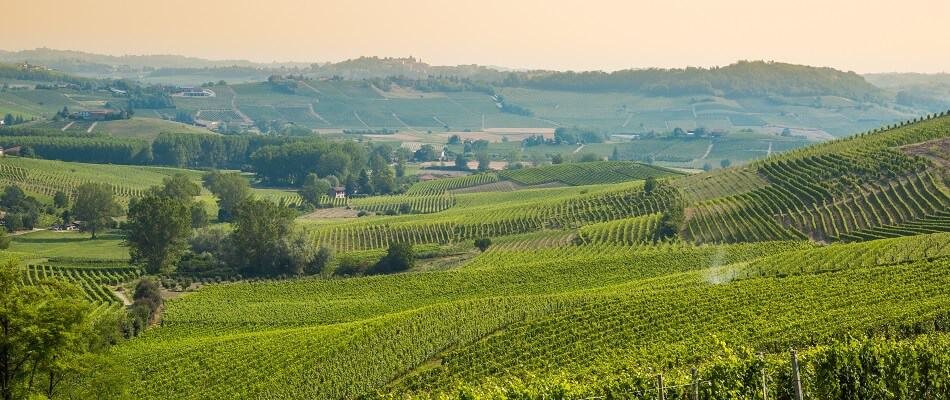
Vineyards in Barossa Valley, Australia
Spain
Spain is another very relevant country for Syrah wine lovers. You can find plantings in the Castilla-La Mancha region, Aragon, and Catalonia, among others. In sum, Spanish vintners cultivate around 50,000 acres (20,000 ha) of the variety, equaling 4% of all red grapes.
South America
In South America, Syrah is an essential grape for vintners in Argentina and Chile, with accumulated plantings of 30,000 acres (12,000 ha) respectively 20,000 acres (8,000 hectares).
South Africa
With about 10% of the country’s vineyards, Syrah is a vital grape for South Africa’s wine industry. Plantings sum up to around 25,000 acres (10,000 ha). Interestingly, local winemakers use both names: While they label most wines Shiraz, they name Rhône-style wines Syrah.
USA
In the United States, you can find 22,000 acres (9,000 ha) of Syrah vines. Most of them are located in California, but you can find significant plantings in Washington State, Oregon, and Ohio, too. Vintners produce various wine styles from it. Some are similar to European wines and consequently carry the label Syrah. On the other hand, those comparable to bolder Australian styles often go by the name Shiraz.
Other European Countries
In addition to France and Spain, many other European countries produce Syrah wines, including Italy and Portugal. In Austria and Switzerland, vintners cultivate the grape, too, but only in relatively small quantities.
HOW DOES SYRAH TASTE?
Syrah wines from cooler countries are dry, full-bodied wines with at least medium and more common high alcohol volumes. High acidity and medium to high tannin levels contribute to a good, elegant balance. These wines offer concentrated aromas of black fruits such as plums, blueberries, and blackberries, together with herbal, floral, and smoky notes. Spicy aromas like white or black pepper are typical for Old World styles, too, and so are chocolate aromas. When aged in oak, the wines develop more spicy and toasty flavors and notes of tobacco or black tea.
How Does Shiraz Taste?
Like their European cousins, Australian Shiraz wines feature primarily fruity aromas. But they tend to be even higher in alcohol and tannins. They typically have more contact with oak, giving them intense aromas of smoked meats such as beef jerky. Some also develop gamey notes when aged for a very long time (10+ years).
Is Syrah Like Merlot?
Syrah is not similar to Merlot. They have in common that they are both dry red wines. But Syrah is a rich, full-bodied wine with significant levels of alcohol, tannins, and acidity. In contrast, Merlot is relatively low in tannins and alcohol, making it much lighter and more approachable. Especially for wine newbies, Merlot is the better choice.
Is Syrah Like Pinot Noir?
Syrah is closer to Pinot Noir than it is to Merlot. Nevertheless, the two red wines are quite different from each other. Pinot Noir typically has a medium body with subtle tannins and medium levels of alcohol and acidity. In summary, it is less bold and also more food-friendly.
Is Syrah Like Cabernet Sauvignon?
Syrah and Cabernet Sauvignon are comparable. Both wines are dry, bold, tannic, and intense in both alcohol and acidity. They also feature similar aromas, including black fruits, herbs, and various spices. Both wines can vary in taste, based on where they were produced, though.
HOW TO SERVE SYRAH WINES?
Syrah wines are big and bold, making them an excellent pairing for a rich main course. Proper aeration is crucial, so make sure to use the right glasses and consider decanting your wines.
What Is the Right Glass for Syrah?
You should serve Syrah in a glass with a wide, round bowl. This shape supports aeration and allows the more aggressive alcoholic odors to dissolve quickly. As a result, the fruity and spicy notes of the wine can shine.
Some manufacturers offer special Syrah glasses that highlight the wine’s characteristics perfectly. Alternatively, a Cabernet glass is a good choice because it has a similarly big bowl.
What Is the Right Serving Temperature for Syrah?
The optimal serving temperature for Syrah wines is between 60 and 65°F (15-18°C). If your wine is too warm, consider chilling it in the fridge for about 15 minutes.
Should You Decant Syrah?
Bold red wines definitely need some aeration. Otherwise, their high levels of alcohol and tannins can mute their more delicate aromas. Thus, you should give them about two hours in a decanter before serving them. This time allows them to open up and rise to their full potential.
HOW TO STORE SYRAH WINES?
The best place to store wines is a dark and cool room in your basement. You have to protect them from sunlight and sudden temperature changes. Also, make sure to keep them away from chemicals with strong smells, such as wall paint or cleaning agents. These aggressive odors can invade a wine bottle via the cork. To prevent that, better separate your wines from them.
Can Syrah Go Bad?
Like all other table wines, Syrah can go bad. The main reasons for spoilage are high temperatures and exposure to oxygen due to broken corks. Thus, the formerly mentioned storing conditions are crucial.
How Long Does Syrah Last When Open?
Because of its high alcohol content, Syrah lasts a little bit longer than other wines after opening. Nevertheless, you should finish your bottle within 4 to 6 days at the latest. Make sure to store it in the fridge. Also, reseal it with the original cork or a bottle stopper.
Can Syrah Be Aged?
With their high alcohol contents and their significant tannin levels, Syrah wines are very age-worthy. You can store most styles for 5 to 10 years, and they will get perceivably better during that time. The best wines can age for up to 25 years.
SYRAH FOOD PAIRING
Young Syrah (up to 5 years of age) is a great pairing for barbecues, particularly Texas and Carolina BBQ styles. For instance, try it with pulled pork, beef burgers, or fatty steak cuts such as ribeyes or T-bones.
Another excellent food pairing for these fruity wines is lamb. That’s true for roasted lamb, ragu, and also for Arabic dishes such as Lamb Shawarma or Moroccan Lamb Tagine.
Seafood pizza pairs surprisingly well with red wine, too, given the wine is not too bold. These pizzas feature salty flavors and, in many cases, garlic. Fruity, medium-bodied wines create an exciting contrast to these intense flavors.
Vegetarians can combine the wine with grilled vegetables, for example, eggplants or portobello mushrooms.
Shiraz Food Pairing
When you make a Kansas-style BBQ with intensely spiced pork and beef, go for Shiraz. In general, the Australian styles are superb beverages for all types of rich roasted meats.
As mentioned before, wines that mature for ten or more years often develop gamey notes. Logically, these wines pair excellently with game meat, including venison, wild boar, grouse, and pheasant.
GSM Blends Food Pairings
Prestigious GSM blends, for instance, Châteauneuf du Pape wines, are fantastic when combined with rabbit or venison preparations. The same is true for spicy dishes from Asian cuisine with fruity side dishes (for instance, plum sauce).
SYRAH SHOPPING TIPS
To get the essence of pure Old World Syrah, consider a wine from the Rhône region, regarded as the varietal’s home. Entry-level bottles start at around 15 USD, while well-aged wines can cost hundreds of dollars. Here are some examples from different price tiers:
Jean-Louis Chave Selection Saint-Joseph Offerus 2018
- type: red, still, Vintage
- origin: France, Rhône Valley
- varietal: Syrah
- alcohol: 13.5%
Jaboulet Crozes Hermitage Domaine de Thalabert 2019
- type: red, still, Vintage
- origin: France, Rhône Valley
- varietal: Syrah
- alcohol: 15.0%
M. Chapoutier Ermitage Le Pavillon 2006
- type: red, still, Vintage
- origin: France, Rhône Valley
- varietal: Syrah
- alcohol: 13.0%
California has many Syrahs to offer as well. In particular, those from Santa Barbara are worth testing:
Tensley Colson Canyon Vineyard Syrah 2020
- type: red, still, Vintage
- origin: United States, California
- varietal: Syrah
- alcohol: 15.0%
Foxen Williamson-Dore Vineyard Syrah 2018
- type: red, still, Vintage
- origin: United States, California
- varietal: Syrah
- alcohol: 14.0%
Jonata La Sangre de Jonata 2017
- type: red, still, Vintage
- origin: United States, California
- varietal: Syrah, Viognier
- alcohol: 14.5%
Shiraz Shopping Tips
If you want to try a great Shiraz wine from Australia, go for Barossa Valley. The wine region in the Southern part of the country is home to many great wineries that produce delicious Shiraz wines. Be prepared to pay at least 25 USD per bottle for entry-level wines and significantly more for better styles. Here are some examples:
Barossa Valley Estate Shiraz 2018
- type: red, still, Vintage
- origin: Australia, Barossa
- varietal: Syrah
- alcohol: 13.5%
Two Hands Lily's Garden Shiraz 2017
- type: red, still, Vintage
- origin: Australia, South Australia
- varietal: Syrah
- alcohol: 14.5%
- type: red, still, Vintage
- origin: France, Rhône Valley
- varietal: Syrah
- alcohol: 14.5%
GSM Wines Shopping Tips
As mentioned before, wines made from Syrah, Grenache, and Mourvèdre belong to the world’s most prestigious blends. The best GSM blends come from the Rhône region in France and go by the name Châteauneuf du Pape. Their quality comes with a price; you rarely find a bottle for less than 30 USD.
Domaine du Vieux Telegraphe Chateauneuf-du-Pape La Crau 2019
- type: red, still, Vintage
- origin: France, Rhône Valley
- varietal: Cinsault, Grenache, Mourvèdre, Syrah
- alcohol: 14.5%
Chateau Fortia Cuvee du Baron Chateauneuf-du-Pape 2018
- type: red, still, Vintage
- origin: France, Rhône Valley
- varietal: Grenache, Mourvèdre, Syrah
- alcohol: 14.5%
Guillaume Gonnet Chateauneuf du Pape Bel Ami 2019
- type: red, still, Vintage
- origin: France, Rhône Valley
- varietal: Cinsault, Grenache, Mourvèdre, Syrah
- alcohol: 14.5%
Of course, there are Australian GSM blends as well. Here are some bottles to try:
- type: red, still, Vintage
- origin: Australia, Barossa
- varietal: Grenache, Mourvèdre, Syrah
- alcohol: 14.5%
Robert Oatley Signature GSM 2017
- type: red, still, Vintage
- origin: Australia, South Australia
- varietal: Grenache, Mourvèdre, Syrah
- alcohol: 14.0%
Barossa Valley Estate GSM 2017
- type: red, still, Vintage
- origin: Australia, Barossa
- varietal: Grenache, Mourvèdre, Syrah
- alcohol: 14.0%
FINAL WORDS
You might have known or guessed it before reading this article, but now it is clear: In essence, Syrah and Shiraz are the same. Nevertheless, when comparing European Syrah and Australian Shiraz wines, you might sense some differences. Which style is your favorite?


